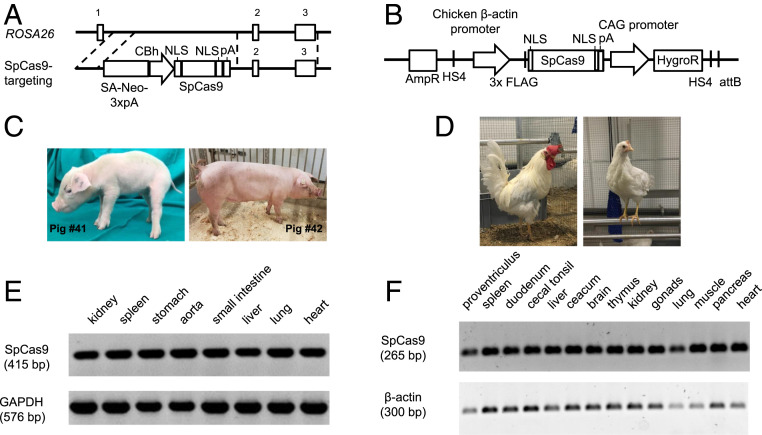Fig. 1.
Generation and expression analyses of SpCas9 transgenic pigs and chickens. (A) Structure of the ROSA26-SpCas9 targeting vector and targeting strategy to introduce SpCas9 gene into the porcine ROSA26 locus. Exons are indicated by numbered boxes, and regions of homology are indicated by dotted lines. (B) Expression vector used for the generation of SpCas9-expressing PGCs. (C) SpCas9 transgenic founder pigs. (D) SpCas9 transgenic rooster and hen. (E) RT-PCR analyses of SpCas9 transgenic pig organs. SpCas9 expression is shown by a 415-bp PCR product, and porcine GAPDH (576 bp) serves as a control. (F) RT-PCR analyses of SpCas9 transgenic chicken organs. SpCas9 expression in all tissues analyzed is shown by a 265-bp PCR product, and β-actin (300 bp) serves as a control.

